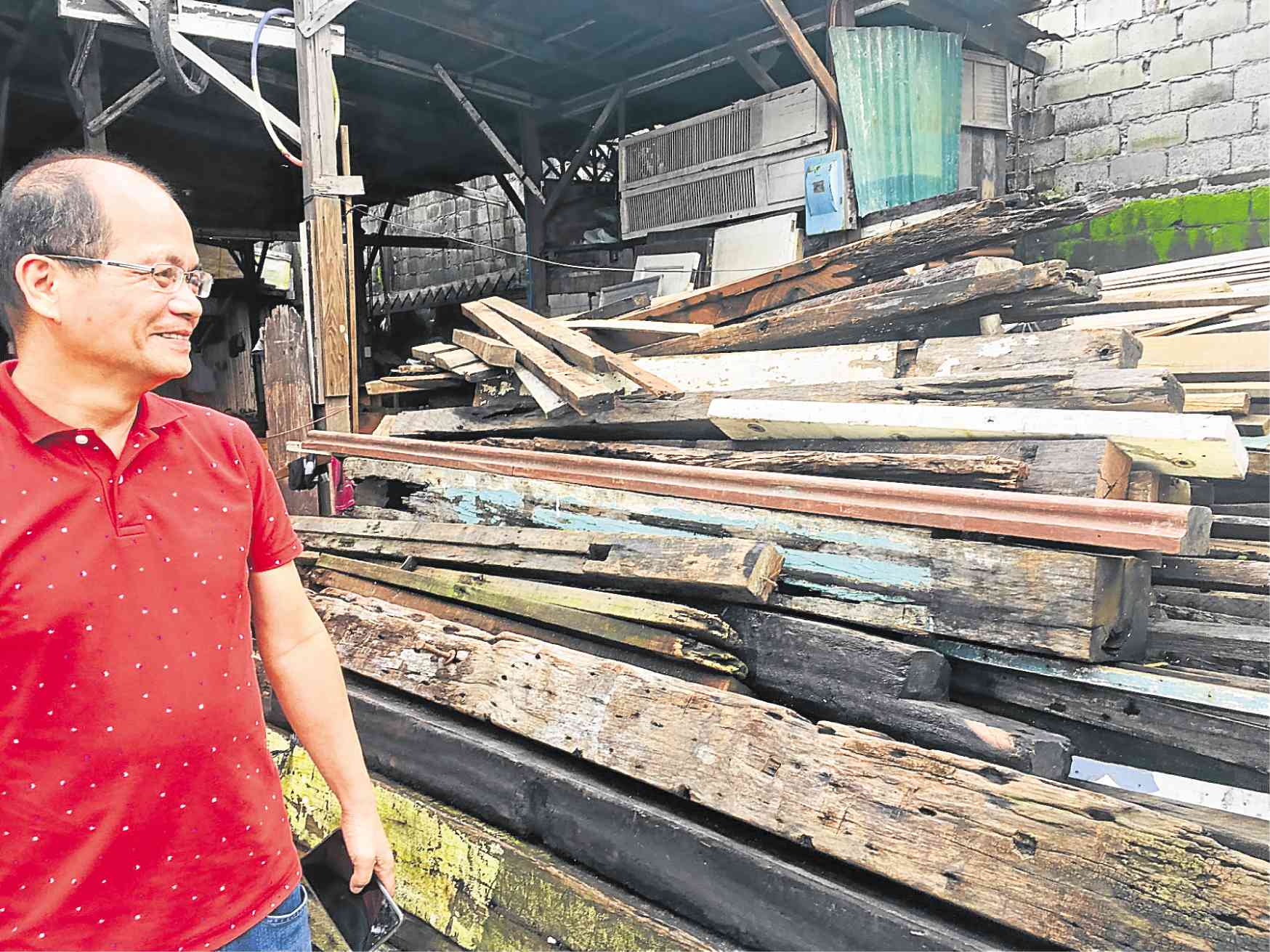Old wood revives Pampanga town
BACOLOR, Pampanga, Philippines — Business is thriving for 15 stores selling “segunda mano” (secondhand) housing materials in this town that almost vanished from the Philippine map because of massive lahar flow from Mt. Pinatubo.
These shops somehow help rebuild the houses that were ravaged by lahar that a typhoon mobilized at dawn of Oct. 1, 1995.
Remembered as the “Cabalantian tragedy,” that single event left thousands of people holding on to their lives atop roofs or clinging to telephone lines as 20-meter high lahar rampaged toward Cabalantian and nearby villages.
Only 10 tall buildings and the 400-year-old San Guillermo Church in the town were left standing.
Almost all lost their homes and farms, creating a diaspora not seen after World War II.
Article continues after this advertisementThis town, the erstwhile capital of Pampanga and the country, was gone. Its stature as the “Athens of Pampanga” seemed lost for good.
Article continues after this advertisementDays before the 24th anniversary of the tragedy, couple Alma and Amador Dorde made the rounds of hardware stores in the town, scouting for new galvanized iron sheets.
“We’ve saved enough money to replace our roof,” Amador said. Alma added: “The secondhand roofs have been leaking already. We’ve been living in a small hut made of secondhand materials.”
They did not have much choice but to live in a smaller home because her family’s old house in Barangay Cabetican had been buried in lahar.
“It’s good that secondhand items are sold here. The prices are low and these are easy to buy because the stores are near,” Alma said.
The 15 stores do business along a 3-kilometer stretch of the old provincial highway from the villages of Cabalantian, San Vicente and Cabambangan to the bridge in Cabetican.

REUSED This house at BarangayCabetican in Bacolor is almost entirely built on used housing materials, mainly for practical
reason than aesthetics.
Rebuilding
Around here, Carlito Peña is considered the pioneer, opening his store in 2001 when the old road was like a gray highway on dry months and a moonscape on wet months.
“On some days, you couldn’t pass this way. The road was in bad shape,” Peña recalled.
He put up his store in Cabalantian because he won a contract to demolish an old school there.
“I settled in Bacolor because it was halfway between Betis and San Fernando. I wanted to cater to sash makers in Betis while selling antique wood to clients in San Fernando. I know there would be high demand for wood because people in Bacolor were also rebuilding their homes,” said Peña, who worked in the business since he was 9 years old under two uncles from Sasmuan town.

PERFECT LOCATION Carlito Peña set up his used lumber business in Bacolor town inP ampanga province because it is halfway between the wood carving district of Betis in Guagua town and thec apital city of San Fernando. —PHOTOS BY TONETTEO REJAS
Construction boom
To Allan Laxa, the cues that started his secondhand lumber store were the construction boom in the Don Honorio Ventura State Technological University in 2005 and the public market that was planned to be built the next year.
To him, these meant that more families would return for good or were building temporary homes as dormitories for students.
Peña sells at lower prices to Bacolor residents “because it is a way of helping revive homes and communities and the town as well.”
His plywood and door fetch only P150 and P2,000, respectively. Apitong and “lawaan” are favorites among low-budget buyers.
His rich clients go for rare hardwood that he is able to get by directly scouting for old Spanish-inspired homes in the provinces and buying these in whole or in parts.
Old wood is preferred because it is “taga sa panahon” (cut at the right time), and “hindi malikot” (it does not bulge or shrink), he said.
Except for modern homes in the town, any house in Bacolor could have one or two pieces of secondhand items recycled as floor planks, windows, doors and grills.

STARK REMINDER The San Guillermo church stands as a stark reminder of the Cabalantian tragedy 24 years ago. On Oct. 1, 1995, Mt. Pinatubo’s lahar entombed more than half of the church, turning the choir loft as its doors. Years later, its belfry has tilted.
Recycling
A former government official turned some tongue and groove narra upside down to make floors for a new house after his ancestral house was buried by lahar.
But in Cabetican Zona Uno, one house stands out for using secondhand materials. The house-cum-bakery and lately, rented as a lotto outlet, took many years to build, according to its owner, Aloha de Leon-Carreon.
She and her husband, Valer, took time because they bought the materials only when they had the money.
The “capiz” windows belonged to her in-laws’ old house that decayed when the couple evacuated to the next town of Guagua during the eruption of Mt. Pinatubo on June 15, 1991.
Laxa said their markets have changed, with 40 percent of their wood now reused for making furniture, 40 percent as stilts in construction works, and 20 percent for houses and heritage projects.
For a small fee, the stores also cut the wood (“tistis”) in the length and width specified by the buyers.
Peña goes to the extent of helping a customer look for a “wood with character” or showing them some antique items like a dining set with bone inlay.

